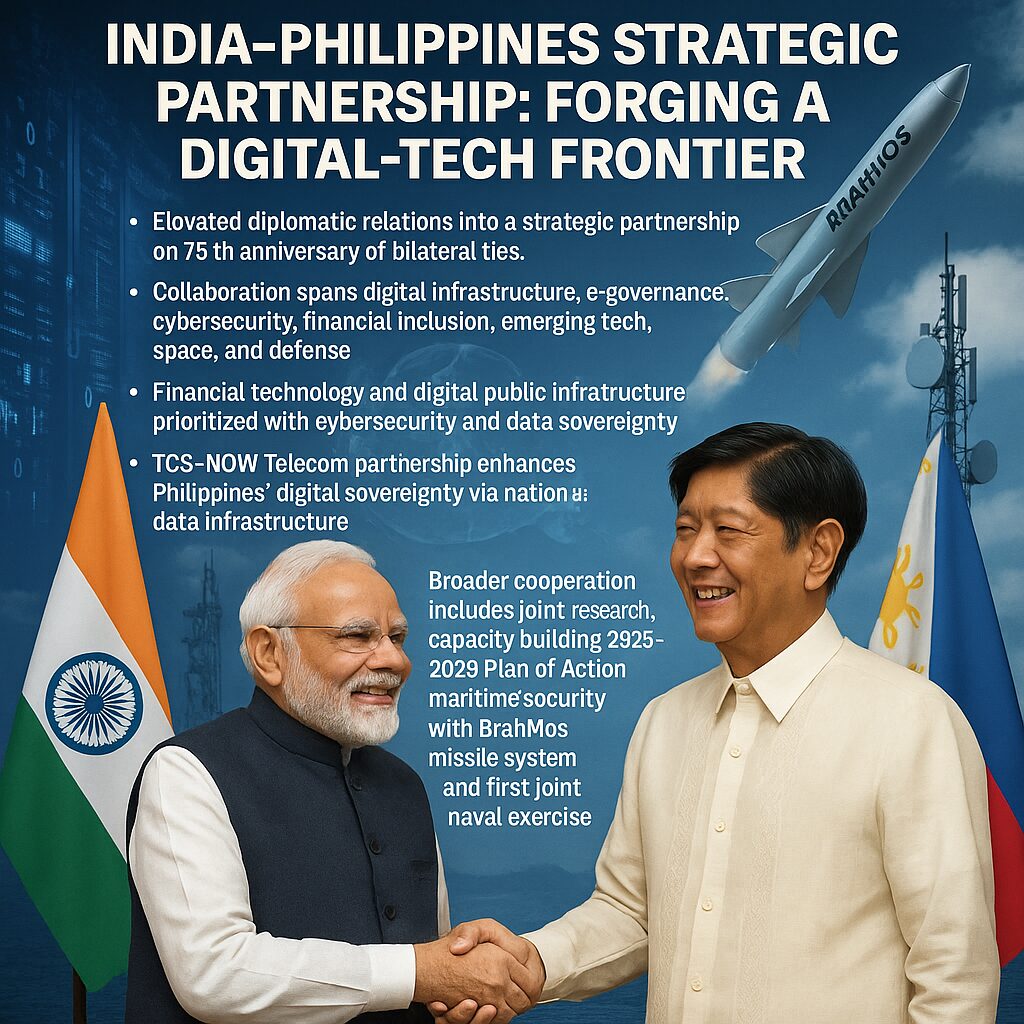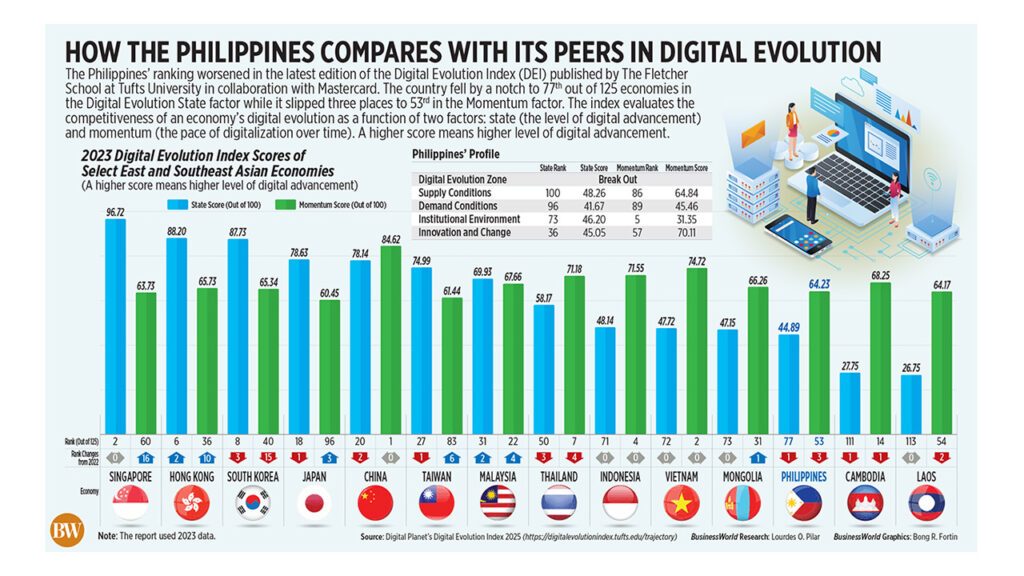
Main Points:
- Elevated diplomatic relations into a strategic partnership on the 75th anniversary of bilateral ties.
- Collaboration spans digital infrastructure, e‑governance, cybersecurity, financial inclusion, emerging tech, space, and defense.
- Financial technology and digital public infrastructure prioritized with cybersecurity and data sovereignty.
- TCS–NOW Telecom partnership enhances Philippines’ digital sovereignty via national data infrastructure.
- Broader cooperation includes joint research, capacity building 2025–2029 Plan of Action, maritime security with BrahMos missile system and first joint naval exercise.
- Investment pledges up to $5.8 billion signal strong economic momentum.
Introduction: From Historical Ties to Strategic Alignment
India and the Philippines have officially elevated their bilateral relations to a strategic partnership during Philippine President Ferdinand “Bongbong” Marcos Jr.’s state visit to New Delhi in August 2025, marking their 75th year of diplomatic ties. This landmark agreement was accompanied by a comprehensive Plan of Action through 2029, spanning a multitude of sectors—from digital transformation to defense cooperation.
1. Digital Infrastructure & E-Governance: Building Resilient, Inclusive Systems
A central thrust of the partnership lies in bolstering digital public infrastructure, e‑governance platforms, and financial inclusion, underpinned by strong cybersecurity and data protection standards. This reflects both nations’ commitment to a secure and inclusive digital transition.

2. Financial Technology & Data Sovereignty: The TCS–NOW Telecom Alliance
India’s TCS (Tata Consultancy Services) has entered a strategic agreement with the Philippines’ NOW Telecom to develop a resilient and secure data infrastructure that enhances digital sovereignty. This includes scalable systems for digital banking, e‑health, and public services, aligned with “clean network” principles.
3. Emerging Technologies: Space, Edutech, Medtech & Beyond
The partnership also sets the stage for collaboration in emerging sectors such as space, edutech, medtech, and peaceful uses of nuclear energy, emphasizing innovation led by academia, startups, and industry. The joint Research and Development (R&D) roadmap is defined under the 2025–2028 Programme of Cooperation.
4. Cybersecurity & Digital Governance: Staying Ahead of Digital Threats
To tackle escalating digital threats—such as cybercrime, tech misuse by terrorists, and financial frauds—the two countries will convene regular Joint Working Groups. Collaboration extends to AI, digital forensics, CERT coordination, and policy dialogue.
5. Defense, Maritime Security & Trade: BrahMos, Naval Drills & Preferential Trade
Defense and maritime cooperation have been significantly enhanced. Highlights include:
- Delivery of India’s BrahMos supersonic missile to the Philippines.
- The first-ever joint naval exercises in the contested South China Sea.
- Negotiations toward a Preferential Trade Agreement (PTA) and simplification of ASEAN‑India trade processes.
6. Economic Momentum: $5.8 Billion in Investment Pledges
President Marcos wrapped up his visit with $5.8 billion in potential investments, signifying substantial economic and technological confidence in the partnership.
7. Strategic Vision: Counterbalancing & Multipolar Asia
For the Philippines, this alliance offers a strategic counterweight amid regional alignments; for India, it expands its role in Southeast Asia as part of its “Act East” and “MAHASAGAR” visions forging a multipolar Asia.
Conclusion: A Shared Digital-Tech Frontier for the Indo-Pacific
This strategic partnership marks more than a diplomatic milestone—it signals a comprehensive, forward‑looking alliance. By weaving together digital innovation, cybersecurity, financial inclusion, emerging technologies, defense, and economic collaboration, India and the Philippines are crafting a robust foundation for a resilient, inclusive, and multipolar Indo‑Pacific region.

